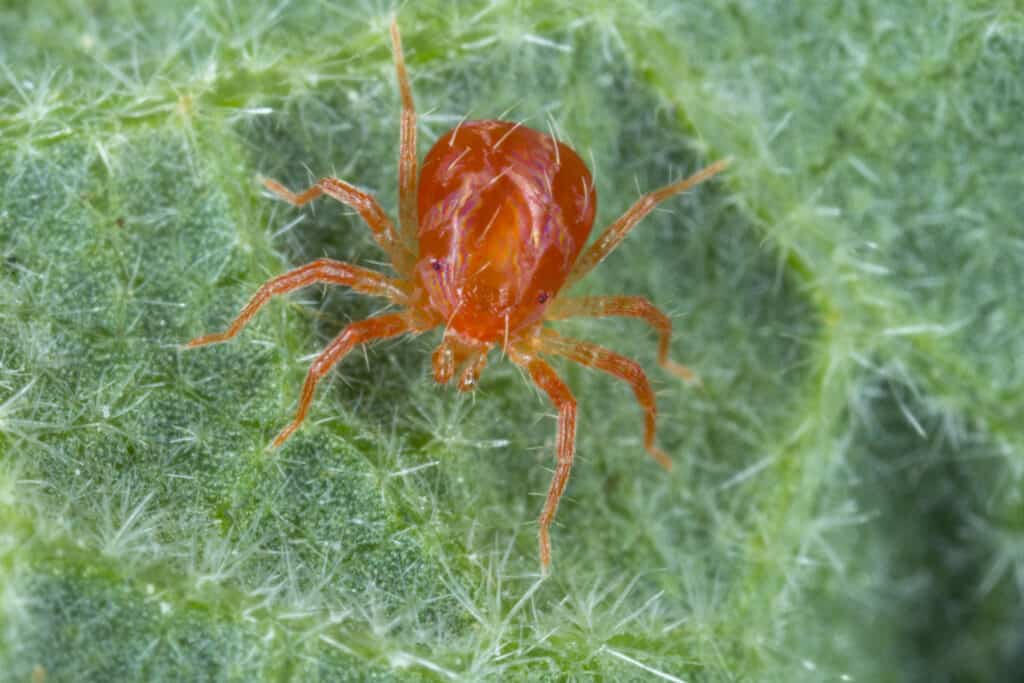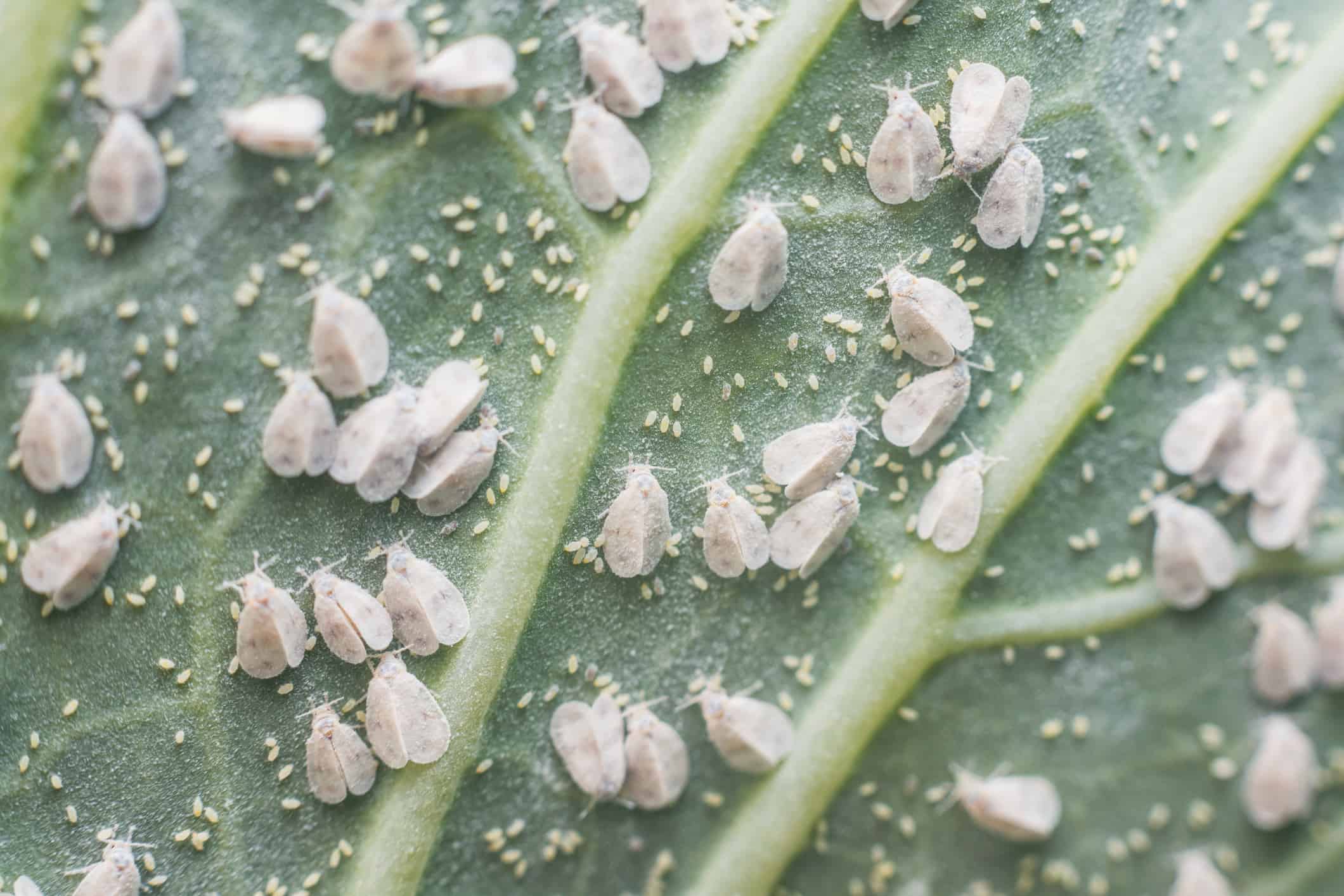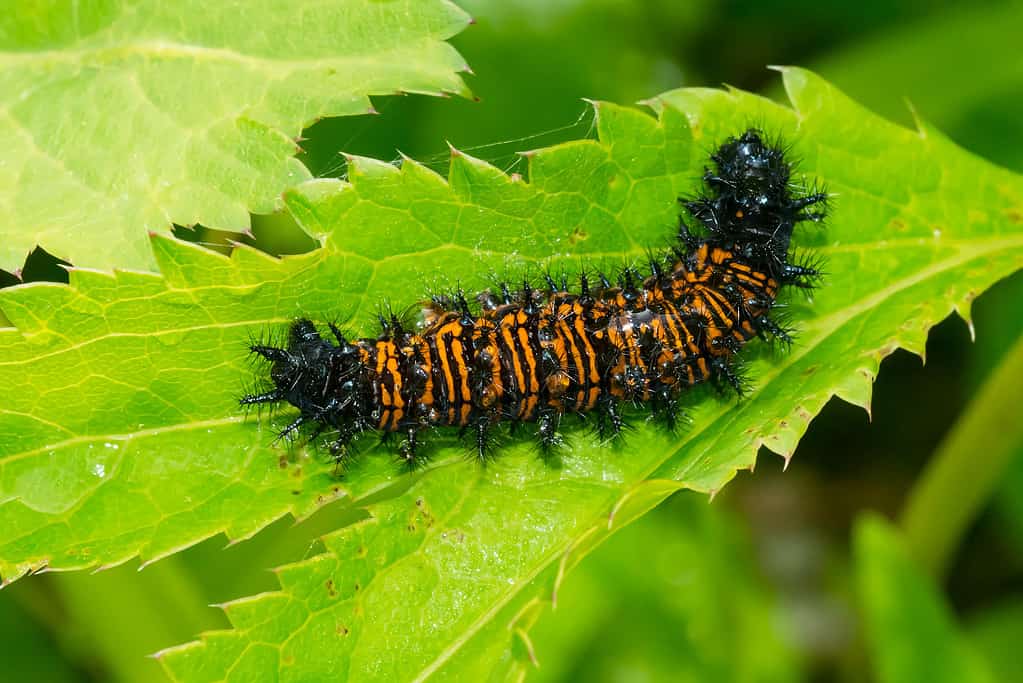There’s nothing quite like nurturing your garden and watching it blossom over time. But every gardener knows that with gardens come unwanted guests. They see the bounty and they want some of it. But to keep them away, you have to be proactive. Discover five common garden pests and learn how to control them naturally!
5 Common Garden Pests
1. Spider Mites
Scientific name: Tetranychidae
Spider mites are highly destructive to plants. They pierce plant cells to extract the juice of fruit trees, vegetables, ornamentals, and field crops. As a result of the devastation they leave behind, your yield is greatly affected. Not only that but the quality, and ultimately market value of your harvest could suffer.
Spider mites belong to the arachnid family, and some of the members are ticks and scorpions. As soon as they arrive, they make it obvious. Look for discoloration of the leaves (very small white or yellowish spots). They also leave tiny webs in their wake, which may be imperceptible at first glance.

Spider mites have a distinctly red/orange color that distinguishes them from aphids.
©Tomasz Klejdsz/Shutterstock.com
2. Flea Beetles
Scientific name: Alticini
Flea beetles are no threat to humans but managing them can be a challenge. They can develop resistance to some insecticides, so it is sometimes required to apply Integrated Pest Management (IPM). This involves combining biological and chemical methods.
If not properly treated, flea beetles can go on to cause great damage in agricultural areas. Some of the potentially affected plants include broccoli, cabbage, corn, beans, and eggplants as they devour the leaves of plants. They don’t consume them entirely, but they do leave round holes (their signature) that can leave the plants stressed and vulnerable to other diseases.

Flea beetles are similar in appearance to leaf beetles, albeit markedly smaller.
©InsectWorld/Shutterstock.com
3. Whiteflies
Scientific name: Aleyrodidae
Whiteflies have whitish-yellowish bodies that give them a powdery appearance. They are tiny insects, and they have a four-stage life cycle: egg, nymph, pupa, and adult. The females look for the undersides of the leaves to lay their eggs so that when they become nymphs, they start to obtain sustenance from the plant sap. Whiteflies excrete a gooey substance named honeydew to attract other pests such as ants. Some of the affected plants include cucumbers, tomatoes, citrus trees, and others.

Whiteflies are agricultural pests that feed on on cabbage leaves (pictured) and other plants.
©iStock.com/Andrei310
4. Slugs
Scientific name: Gastropoda
Slugs have slimy and elongated bodies. There is no outer shell, and they leave a trail of slime as they contract their bodies on the ground while they move. They are not to be confused with snails as snails have a hard shell. Slugs prefer dark, cool, and damp environments, and during the day they look for shelter under rocks, vegetation, or logs.

Slugs love vegetable gardens.
©Art_Pictures/Shutterstock.com
5. Caterpillars
Scientific name: Lepidoptera
There are several caterpillar species, and they vary in shape and color. They have three pairs of legs, including the prolegs along the abdomen. Caterpillars also have mouthparts, including strong jaws to chew plant material, and they must eat a lot to grow quickly. They devour flowers, stems, leaves, and fruits. They have an excellent defensive mechanism as they can release toxins, stinging hairs, sharp spines, or unpleasant chemicals.

A Baltimore checkerspot caterpillar rests on a green leaf.
©Paul Reeves Photography/Shutterstock.com
Common Garden Pests: How to Control Them Naturally
You don’t have to resort to pesticides to keep your garden free of pests. Your very first course of action should be to start with the right soil. Introduce natural elements like compost to your soil to keep it clear of pests. After you go through a tilling process, preferably at the start of a growing season, go ahead and cover your garden for a couple of months.
You can use something simple like dark plastic. This process is so that you can let the heat build and get rid of anything harmful that might be trying to nest in your soil. After a couple of months, remove the covering and cultivate your clear soil. Make sure that you’re also working with pest-resistant seeds and when you start noticing growth, get rid of any of the weak seedlings.
Ultimately, these are more prone to developing issues, and getting rid of them early on helps protect the stronger plants in your garden. When watering, choose the earliest part of the day. Just as you get rid of weak seedlings, make sure that you keep control of weeds. You might try adding beneficial insects to your garden as well. To keep common pests from getting too comfortable with your routine, practice crop rotation!
Set up physical barriers to keep pests from accessing your plants and be sure to study companion planting to create a garden with plants that mutually benefit from one another. If you do need to use pesticides, choose the organic kinds! Each garden looks a bit different but you can customize one that thrives pest-free!
The photo featured at the top of this post is © Tomasz Klejdysz/Shutterstock.com
Thank you for reading! Have some feedback for us? Contact the AZ Animals editorial team.






